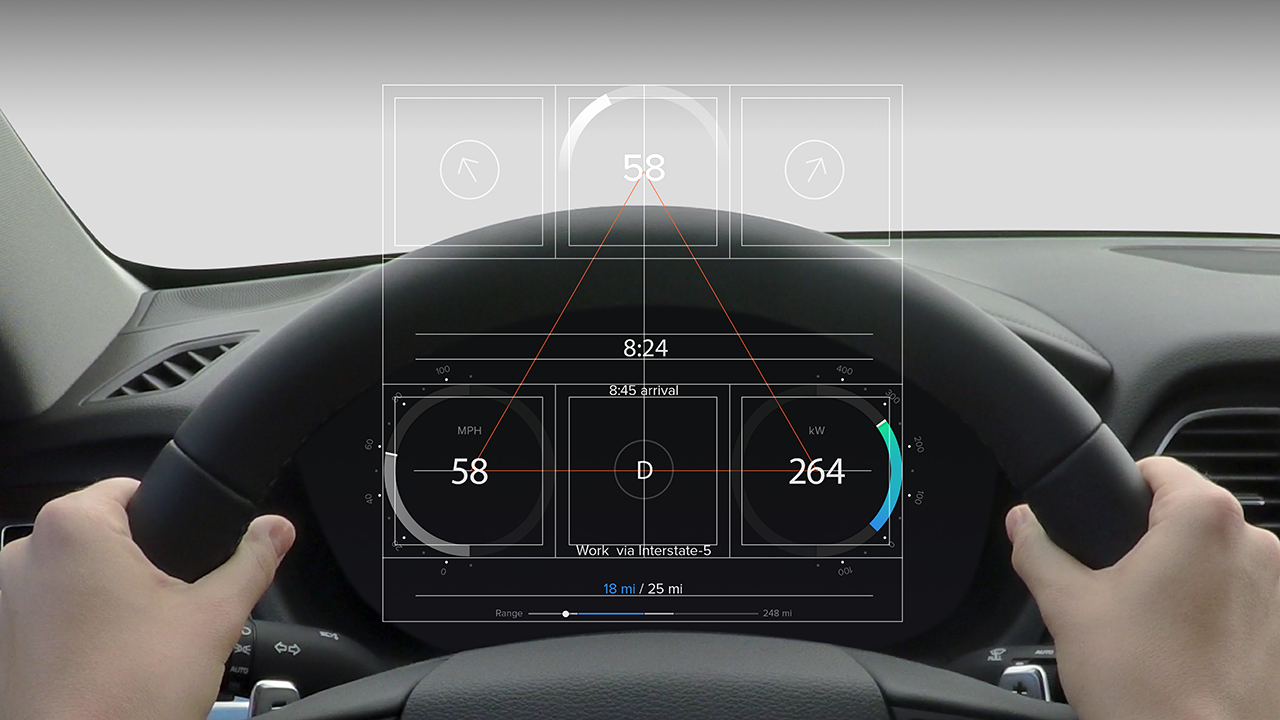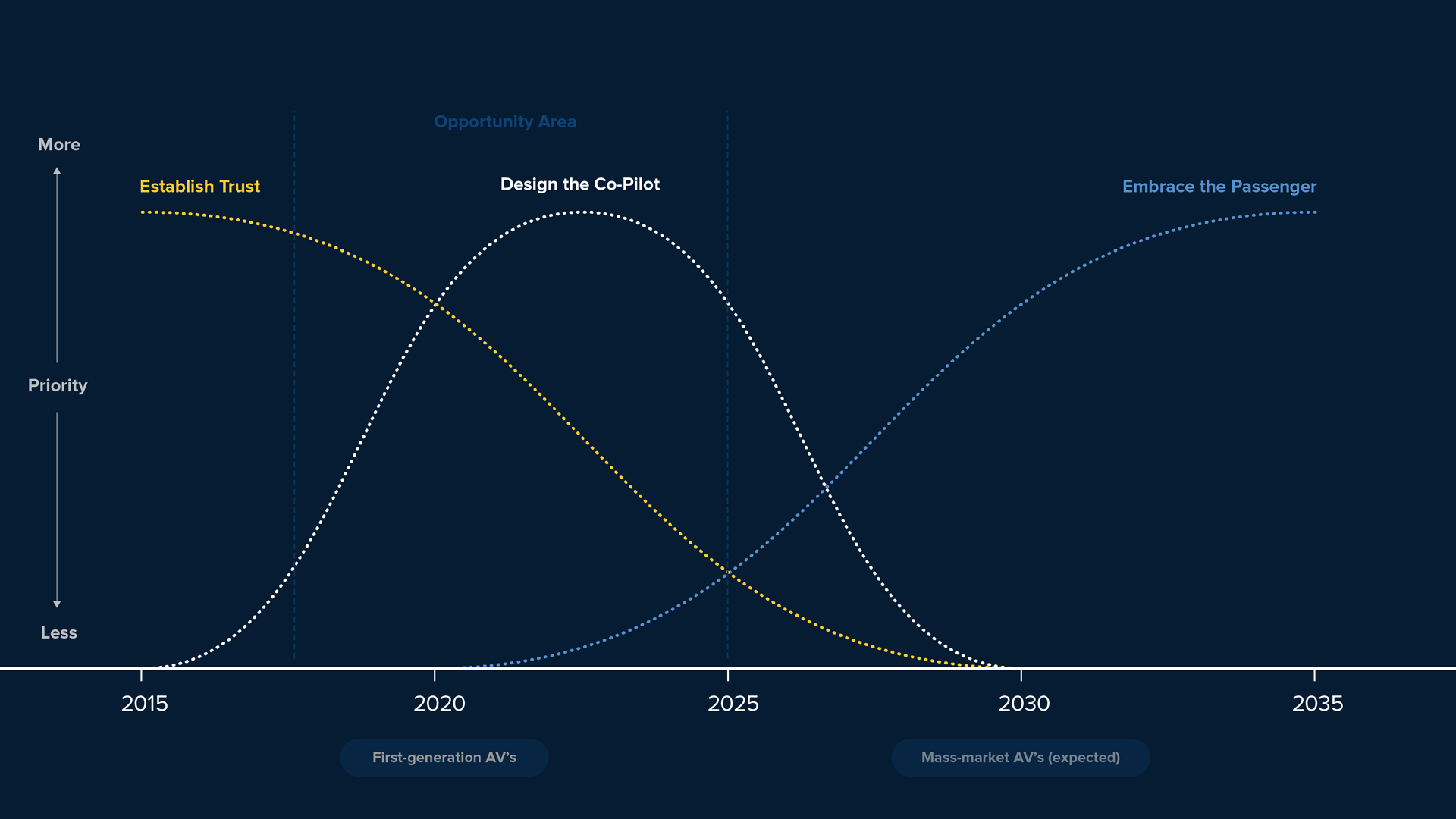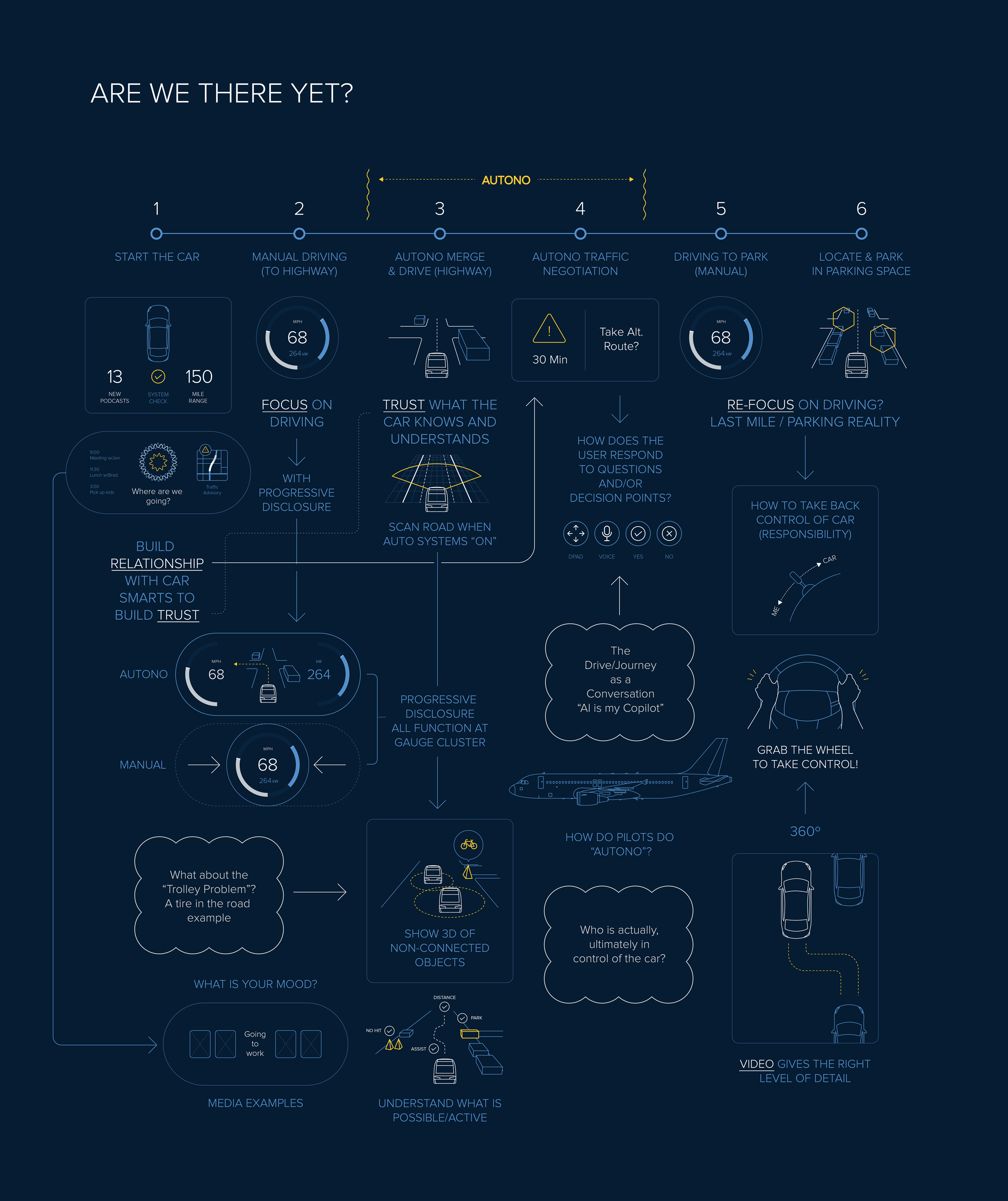Autonomous vehicles (AVs) are closer than ever, but the gap between now and then is an eternity in technology years. Over the next decade, we anticipate the continued emergence of semiautonomous vehicles (SAVs): increasingly intelligent cars with limited autonomous modes that can handle some things, but which will still require the user to take the wheel occasionally.
We partnered with Hyundai to explore UX solutions for the near future of semiautonomous vehicles (SAVs).
Throughout this process, our design principles rested on establishing trust with an engaging co-pilot, transparent systems, adaptive interfaces and new affordances.
We imagined a new Hyundai flagship semiautonomous vehicle, the Genesis, which would have the ability to drive itself. The driver is able to simply twist the wheel inward to literally ‘hand the wheel’ to the car, at which point the entire interface would adapt to expose only the information needed.
While the car is in self-driving mode, the interface shows the driver what the car sees: shapes that represent potential obstacles so that if the car swerves or behaves abnormally, the driver doesn’t have to wonder why.
Our work with Hyundai is an effort to establish the design principles we believe will pave the way for the AVs of the future.





